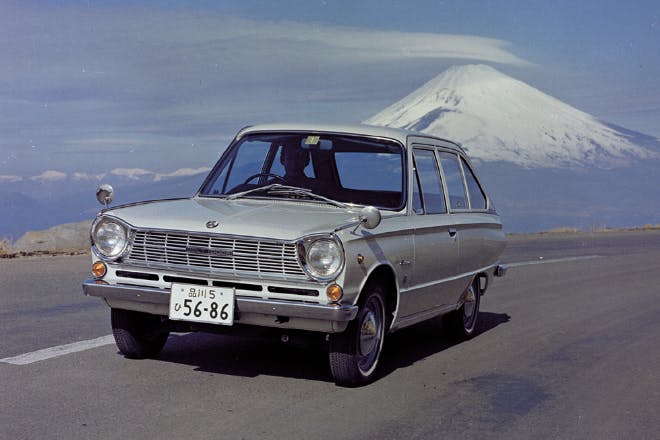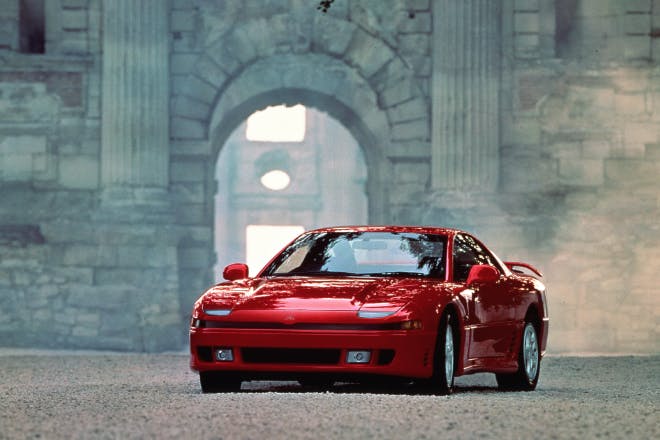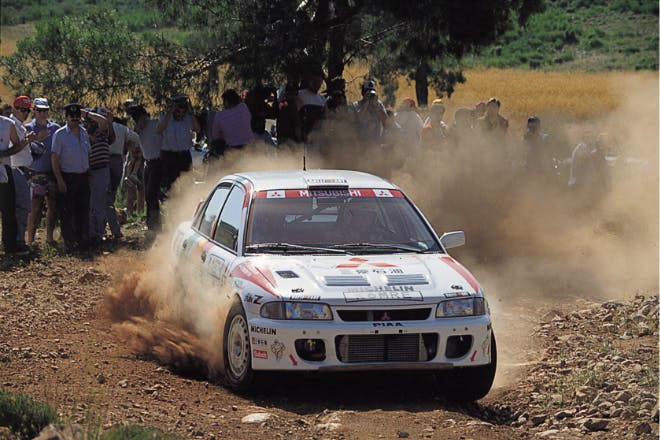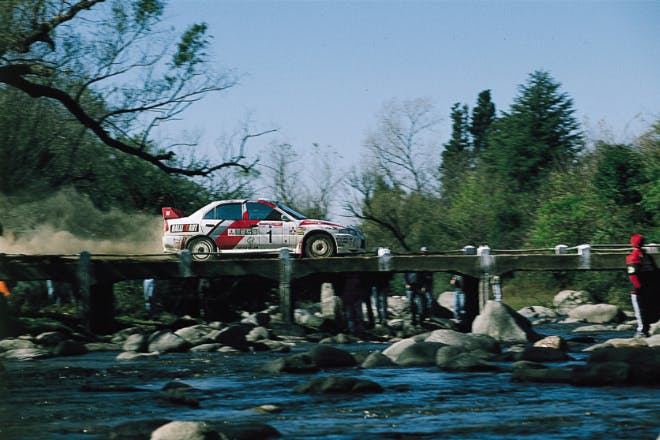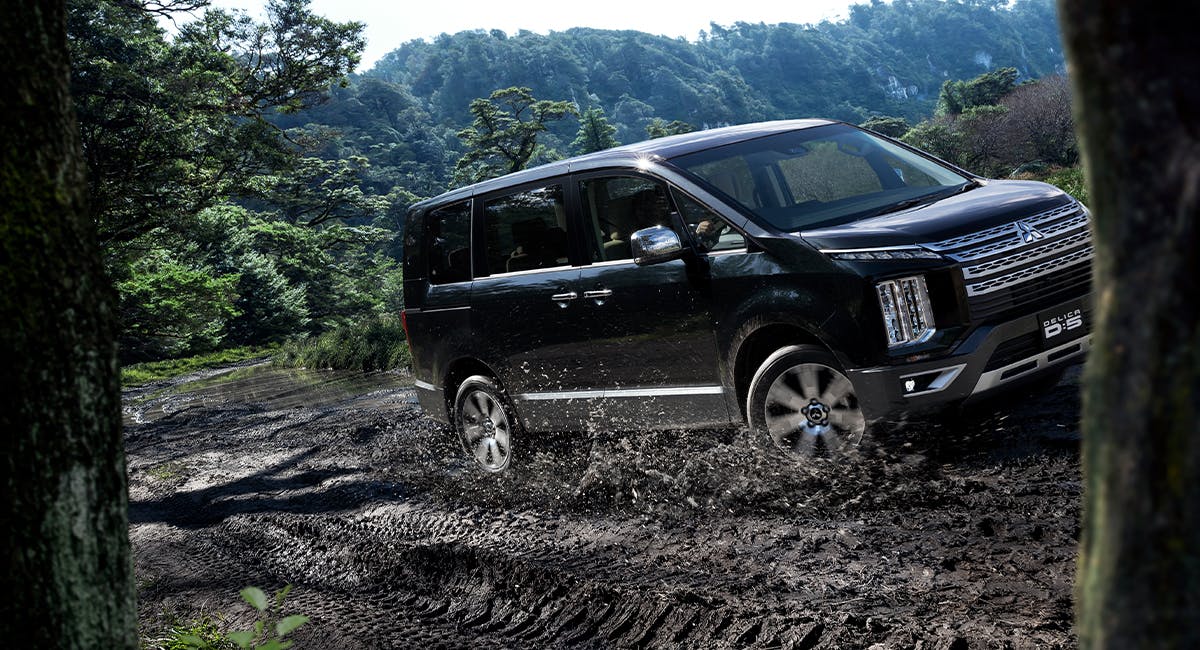The rise and fall of house Mitsubishi
In the early 1990s, Honda was in deep trouble. Then-CEO Nobuhiro Kawamoto had just grasped the helm of a somewhat leaky ship. The death of company founder Soichiro Honda in August of 1991 left a gaping leadership void, and the company’s product portfolio was behind the times. Enthusiast-pleasing niche fare like the Acura NSX didn’t pay the bills. Japanese newspapers sensed blood in the water and warned of imminent hostile takeover from a rival Mitsubishi.
Kawamoto got to work quickly, developing vehicles like the Odyssey minivan for 1994 and the CR-V for 1996, both of which would prove sales leaders. He also ended the company’s expensive involvement in Formula 1. The engineers weren’t happy, but the accountants were; he righted the ship, and Honda narrowly escaped a Mitsubishi takeover. It’s hard to imagine how different today’s modern automotive world would look had Kawamoto not acted so decisively.
Given the degraded state of the company’s product line in North America, it’s perhaps difficult now to imagine a time when Mitsubishi had the financial wherewithal to threaten Honda. Today, in the U.S., it’s not unheard of for Honda to sell twice as many vehicles in a single month as Mitsubishi can sell all year. The revised Outlander crossover is a step in the right direction, but even with the funky Eclipse Cross, Mitsubishi showrooms seem sleepy when Honda’s floor plays host to everything from a light pickup truck to a raucous Civic Type R.
That wasn’t always the case. Even by the time of its performance heyday in the 1990s, Mitsubishi was a company with a long and rich tradition. Over more than a century, the Japanese automaker has produced a litany of interesting cars. Some of them becoming lasting pop culture icons. The story of Mitsubishi is that of a once-proud noble house, rising to own a large section of the market, which is now reduced to shadow of its former self. There is, however, a chance for it to rise again.
The samurai and the Model A

Iwasaki Yatarō, founder of Mitsubishi, was born a commoner in Japan in 1835. The country was closed off from the rest of the world at that time, in the midst of a self-imposed isolationism that would last two centuries. His family was well-off enough that he received a good education, but an eighteenth-century ancestor had sold off the family’s noble samurai status in repayment of debts. Trade with other countries was extremely restricted, and foreign visitors were essentially unheard of. A feudal system of government was still in place, one that began to fracture when the gunships of U.S. Commodore Matthew C. Perry steamed into Edo Bay on July 8th of 1853. Suddenly, Japan was forced to adapt to the modern world.
Once employed by the forward-looking Yamauchi trading clan, Yatarō found himself ideally situated to take advantage of Japan’s rapid modernization. He bought back his family’s samurai status and also became involved in the new imperial Japanese government’s efforts to destroy the feudal system. He became head of a shipping company which he later named Mitsubishi, its symbol a combination of the Iwasaki clan diamond crest and the triple-leaf Yamauchi clan.
The Tom Cruise period action drama The Last Samurai depicts a Hollywood-romanticized version of the Satsuma rebellion, which saw Japan’s new, modern army putting down a samurai revolt. In the real event, Mitsubishi ships carried Imperial troops to crush the samurai rebellion, knitting the company’s fortunes together with those of the imperial Japanese government.

By 1917, Yatarō’s nephew Koyota was the fourth president of Mitsubishi. The company had grown and diversified beyond shipping interests, and Koyota recognized the potential of the growing automobile market. Under his direction, Mitsubishi’s shipbuilding arm built 22 examples of the Model A, a luxurious seven-seater sedan similar to the Fiat Tipo 3. It had a 2.8-liter four-cylinder engine good for 35 hp, and a top speed of 60 mph. Few were made because of the expense of hand-building each one, but Mitsubishi could boast Japan’s first series-production automobile.
The company also created another first with the PX33 prototype sedan. Four examples were made as commissions to the Japanese government between 1934 and 1937, and each featured full-time all-wheel drive. The project was cancelled as Mitsubishi pivoted to wartime production.
Mitsubishi Jeeps and Dodge Colts

In the period immediately after WWII, Mitsubishi turned production to three-wheeled cars and scooters, as well as trucks and buses. It was also the distributor for Mazda vehicles, and some of the earliest Mazdas carry Mitsubishi’s logo.
Being inextricably linked to the wartime Japanese imperial government, which was dissolved in 1947 amid the formation of what is now modern Japan, was a black mark against Mitsubishi. The Allied forces called for the breaking up of many zaibatsu—huge, diversified, family-controlled businesses—and Mitsubishi was split into three parts.
Each section, West, Central, and East, developed its own automotive divisions. The Central Japan division produced one of the stranger footnotes in Mitsubishi’s history when it struck a deal with Kaiser to build the Willys CJ Jeep in knock-down kit form. Mitsubishi Jeeps started being produced in 1953 and the company didn’t stop building them until 1998.
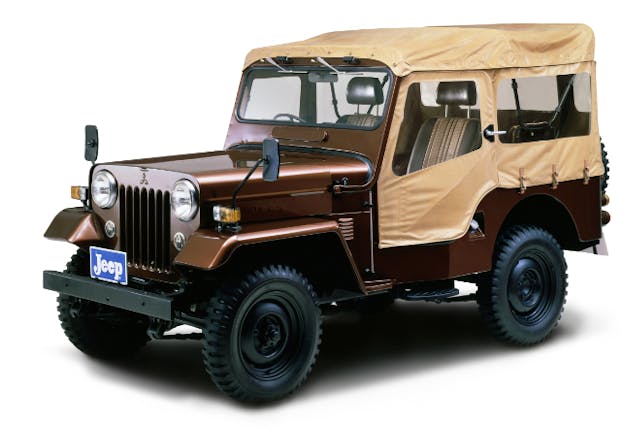
By 1964, the three divisions were reunited as Mitsubishi Heavy Industries, and in 1970, the Mitsubishi Motor Company was formed as a subsidiary. Nameplates like the Colt, Galant, and the later Lancer appeared. In the Japanese home market, the tiny Minica (a portmanteau of Mini and Car), was a popular entry in the kei market segment.
Mitsubishi president Tomio Kubo, an engineer who had designed several successful fighter aircraft during WWII, staked the company’s U.S. export strategy on an alliance with Chrysler. Fifteen percent of Mitsubishi Motor Company was sold to Chrysler, and Dodge began importing small, rebadged Mitsubishi models.

Somewhat confusingly, the Dodge Colt was not based on the Mitsubishi Colt, but instead the slightly larger Galant. Either way, the move was win-win: Mitsubishi sales grew, and Chrysler had a well-sorted compact offering to go up against the likes of the Ford Pinto, Chevy Vega, as well as little Datsuns and Hondas. With the fuel crises of the 1970s increasing consumer demand for small cars, the Colt sold strongly. By 1980, Mitsubishi was producing a million cars annually.
Fast, furious, and totally Normal

By the early 1980s, Mitsubishi had started selling cars in the U.S. through its own dealer network. The most interesting of these offerings was the Starion, a handsome hatchback coupe intended as a rival to the Toyota Supra and Nissan ZX. Available with a box-flared widebody and a turbocharged four-cylinder engine, the Starion truly appeared to be a compelling performance offering.
While the idea of a quick Mitsubishi was a new concept to U.S. audiences, it wasn’t in Japan. The company had a history of interesting, performance-minded cars in its domestic portfolio. The Galant GTO was introduced in Japan in 1970, and as its designer had trained at Art Center College of Design in Los Angeles, had the air of a shrunk-down Detroit fastback. The GTO wasn’t widely distributed, but it was enough of a success to prompt a followup in the 1990s.

More familiar on our side of the Pacific was the Lancer, which had a long period of success in rally racing. The 1600 GSR model was quick and durable enough to notch up a couple of East Africa Safari rally wins. When boxy styling and turbocharging arrived in the 1980s, the second-generation Lancer featured the mighty 4G63T 2.0-liter four-cylinder engine, a tuner’s delight. The top-spec Lancer EX 2000 Turbo was a pretty serious car at the time, a homologation special with 170 hp (impressive for 1981), and a reversed “2000 Turbo” decal on the front airdam to let traffic know to stay out of the way.
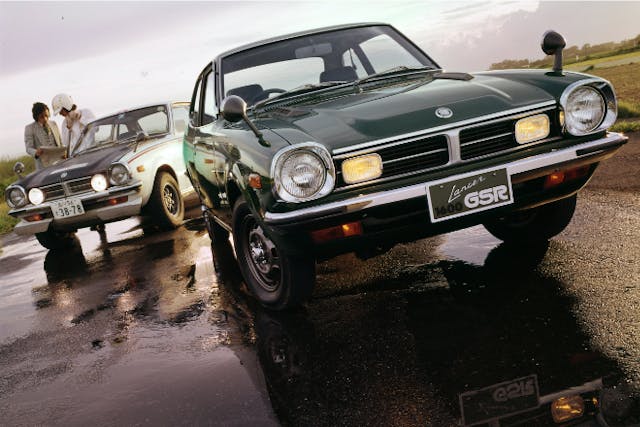
Sadly, turbocharged Lancers took their sweet time coming to America. In their place, U.S. performance enthusiasts got a trio of nameplates, one of which would go on to become arguably the most famous Mitsubishi of all time.
Mitsubishi wanted to move into the U.S. market on its own terms, but it was limited by import quotas; any cars rebadged and sold by Chrysler ate into that quota. The solution was for both companies to form a partnership called Diamond-Star Motors, and together they broke ground on a new factory in Normal, Illinois. The factory would have a production capacity of 240,000 vehicles a year, and the first ones to roll off the line were a trio of near-identical small sports cars called the Eagle Talon, the Plymouth Laser, and the Mitsubishi Eclipse.

Faster than you can say “Danger To Manifold,” the Eclipse and its cousins became tuner car favorites. Even in stock form, the GSX version of the Eclipse was pretty quick, with 195 hp from its turbocharged 2.0-liter four-cylinder, and all-wheel drive to put the power down. Unmodified versions are rare today, and it makes for an interesting and surprisingly accessible collector car.
If, however, you’d like to drop “ten grand” under the hood of your second-generation Mitsubishi Eclipse, you’d have a car quick enough to impress even Dominic Toretto. Everyone remembers the orange Toyota Supra from the Fast and Furious movies, but first on-screen was a green Mitsubishi Eclipse driven by Paul Walker. One of the six used in filming fetched $170,500 at auction this year.
Jackie Chan and John Hennessey
The fictional Brian O’Connor’s Eclipse might be the most famous Mitsubishi, but it’s not the only one associated with a celebrity. In fact, one endorsement ended up being so long-standing that a special edition was created to honor it.
Martial arts action star Jackie Chan was introduced to western audiences with the first Cannonball movie, in which he was on a team driving a Subaru hatchback. However, in the Hong Kong films (and in Cannonball II), Chan was shown driving Mitsubishis. He had signed an endorsement deal with the company in the late 1970s, and Mitsubishi bankrolled many of his movies. The 1995 movie Thunderbolt, where he plays a racing driver, is essentially a feature-length Mitsubishi commercial. It’s surprisingly great fun to watch.
Because of the tie-in, everything from Mitsubishi vans to SUVs were always featured in these films, including several concept cars. Chan also received specially-tuned vehicles, including a Jackie Chan Power Starion, and he was made the honorary president of Mitsubishi’s performance division in China. Fifty special edition Jackie Chan Lancer Evolutions were produced in 2005.
At roughly the same time, one of America’s best-known tuning houses was just beginning to make his name with a modified Mitsubishi 3000 GT VR-4. The 3000GT—which resurrected the GTO badge in the Japanese home market—was a potent car out of the box. Also sold here as the Dodge Stealth, top-spec versions featured a twin-turbocharged V-6, all-wheel drive, active aero, and rear-wheel steering; they were heavy, complex cars, but worthy rivals to the likes of the Toyota Supra Turbo or Nissan 300ZX.
Texas-born John Hennessey took the 3000GT and boosted power up to 450 hp. The performance bump was significant enough to win him both the Unlimited Class at the 1991 Silver State Classic, an open road race in Nevada, and an F-Production/Supercharged class record at Bonneville. The car also competed at Pikes Peak, and was driven to and from each event like any normal road car. Three decades later, Hennessey Performance is all about 1000-hp Camaros and overboosted Raptors, but it all arguably started with Mitsubishi.
Evolutionary performance
At the tail end of the 1990s and into the early 2000s, Mitsubishi’s motorsport prowess was at its absolute peak. Finnish driver Tommi Mäkinen had won the company four WRC rally championships in a row, and Mitsubishi’s Dakar teams were equally dominant.
The two road-going vehicles behind the wins in the dirt were the Lancer Evolution and the Pajero Evolution. Shorthand for the latter is the Pajero Evo, and if you just say “Evo”, most Mitsubishi fans will know you’re talking about the lightning-quick Lancer.
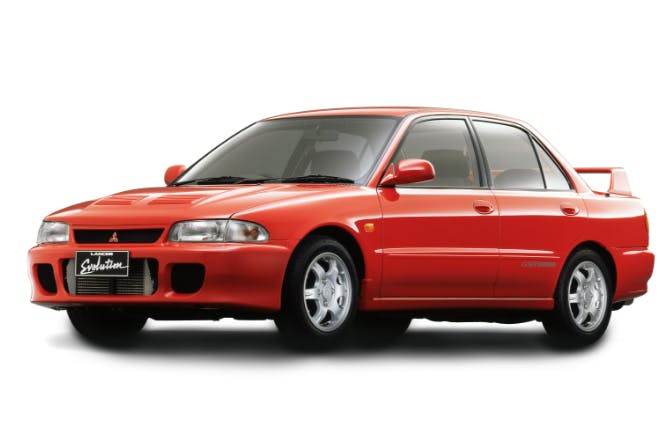
The Lancer Evo was at the center of a long battle with the Subaru WRX, a rivalry that raised the profiles of both companies. Subaru had its wins, but Mitsubishi’s offerings were generally accepted to be a little sharper, particularly on pavement. Ten generations of the car were produced, though it didn’t arrive in the U.S. until the Evo VIII, in 2003.

The Pajero Evo was never officially sold in North America, but as production began in 1997, it’s poised to become a collectible JDM import under 25-year grey market rules. Around 2500 were built for homologation purposes, each a tough, box-flared little truck with a sturdy chassis and unique suspension. It’s Dakar-ready toughness you can park in your garage.
The Long Twilight
The early 2000s might have been a bright spot for Mitsubishi performance enthusiasts, but the company’s fortunes had already suffered a steep decline. In the Japanese home market, it was revealed that Mitsubishi had been covering up vehicle defects in an effort to avoid costly recalls. The scandal was as far-reaching and systematic as Volkswagen’s diesel emissions woes, and it directly impacted home market sales.
The situation in the U.S. was more complex. In 2003, the year when the Evo finally reached American markets, sales peaked at 346,000 units. Mitsubishi wasn’t competitive with Honda, Toyota, or Nissan, but it was holding its own against Mazda and Subaru.

So, what happened? Problems began when Mitsubishi decided to take on the bigger companies instead of pursuing niche markets. Both Subaru and Mazda had clear brand identities, one outdoorsy, one fun-to-drive. Mitsubishi’s message to consumers wasn’t quite as obvious, and while Subaru and Mazda both held their own and managed to broach the mainstream, Mitsubishi faded.
The company closed a hundred dealers in Japan, and U.S. sales fell off a cliff starting in 2008. Products like the Galant and the Lancer aged to the point at which they were uncompetitive, and they were shelved.
Since 2013 however, sales have rebounded somewhat to within sniffing distance of 2005 levels. Last year, the company’s U.S. volume was 102,000.The current Outlander is improved enough that it can perhaps help Mitsubishi to survive, but it’s not much more compelling than the Nissan Rogue with which it shares a platform. Korean automakers are now well established in the mix, armed with excellent products and stellar warranties. It’s hard to see where Mitsubishi grows from here, outside of Mitsubishi managing to create a dominant electric car.
Last chance in a van
Forget the Evos or niche JDM classics for a second. There is one group of diehard Mitsubishi enthusiasts out there that represent a potentially untapped market. You see them all over the West Coast, rolling up to the beach or the forest campsite in their diesel-powered Japanese imports. The Delica owners.
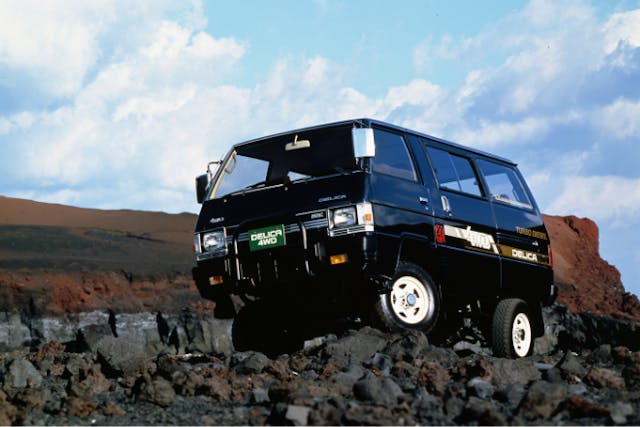
Built from 1968 onward, the Delica is Mitsubishi’s answer to the Ford Transit. But where the Transit is a commercial vehicle foremost, the existence of chunky-tired off-road Delicas act like like catnip to the sort of people who would ordinarily buy a Subaru Outback. People are willing to pay up to $20,000 for mid-1990s Japanese grey market imports, and a whole ecosystem has sprung up around servicing and selling these vans.
You see a similar level of enthusiasm for the camperized Mercedes Sprinter vans, but those are bulkier and vastly more expensive. In places, the Delica has effectively replaced the Volkswagen Westfalia as the van choice of the surf bum crowd. State governments have taken notice and in some cases revoked registrations for these types of vehicles.
In Japan, a new Delica with a turbodiesel engine and all-wheel drive will set you back roughly $35,000. Spec out one of the more off-road-ready versions, and it’s still competitive with a well-optioned Tacoma.
A rolling advertisement for #vanlife is probably not going to be a sales leader, but it would add appeal to a showroom and give the brand some kind of identity. Mitsubishi also has a proven plug-in-hybrid system in its fleet, so there’s perhaps the option of building a Delica variant for people who want a Wrangler 4xe but have four kids.
The alternative is to stay the course, and hope the current range of small-to-mid-size crossovers keeps Mitsubishi afloat for a while. However, Mitsubishi finds itself today in much the same position as Honda once did: financially troubled and needing a decisive hand on the helm. The ship is teetering in uncertain waters. Time to chart a daring course.


